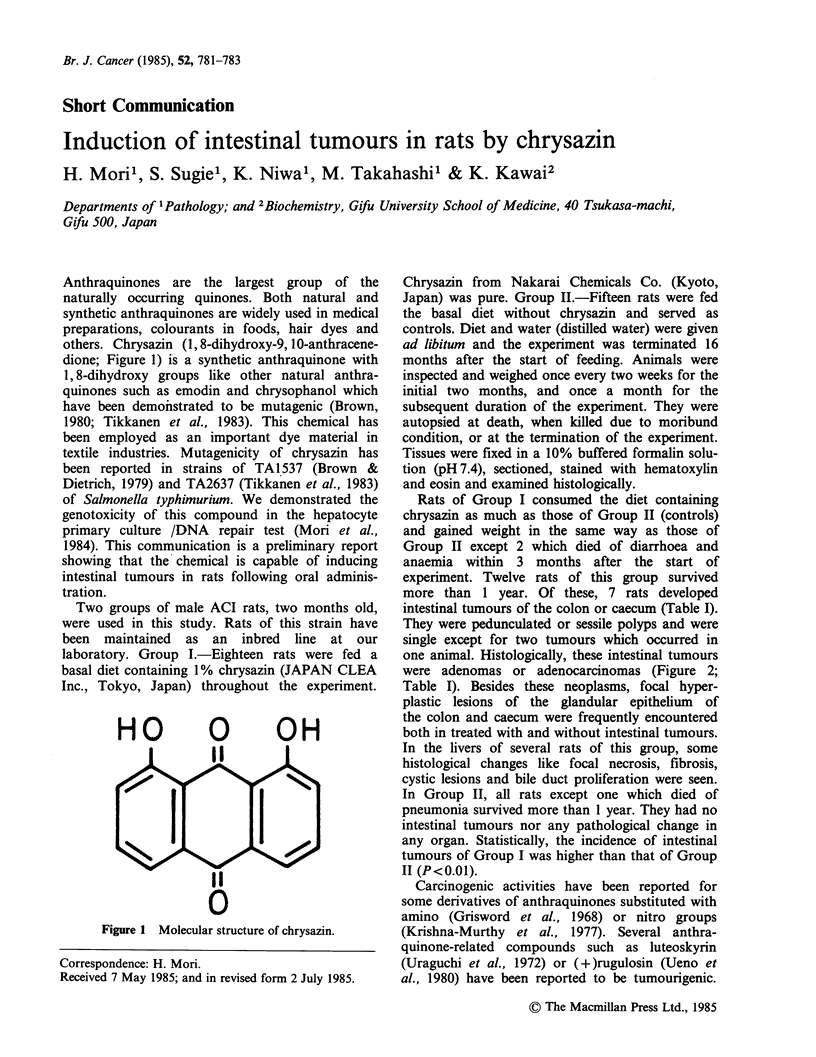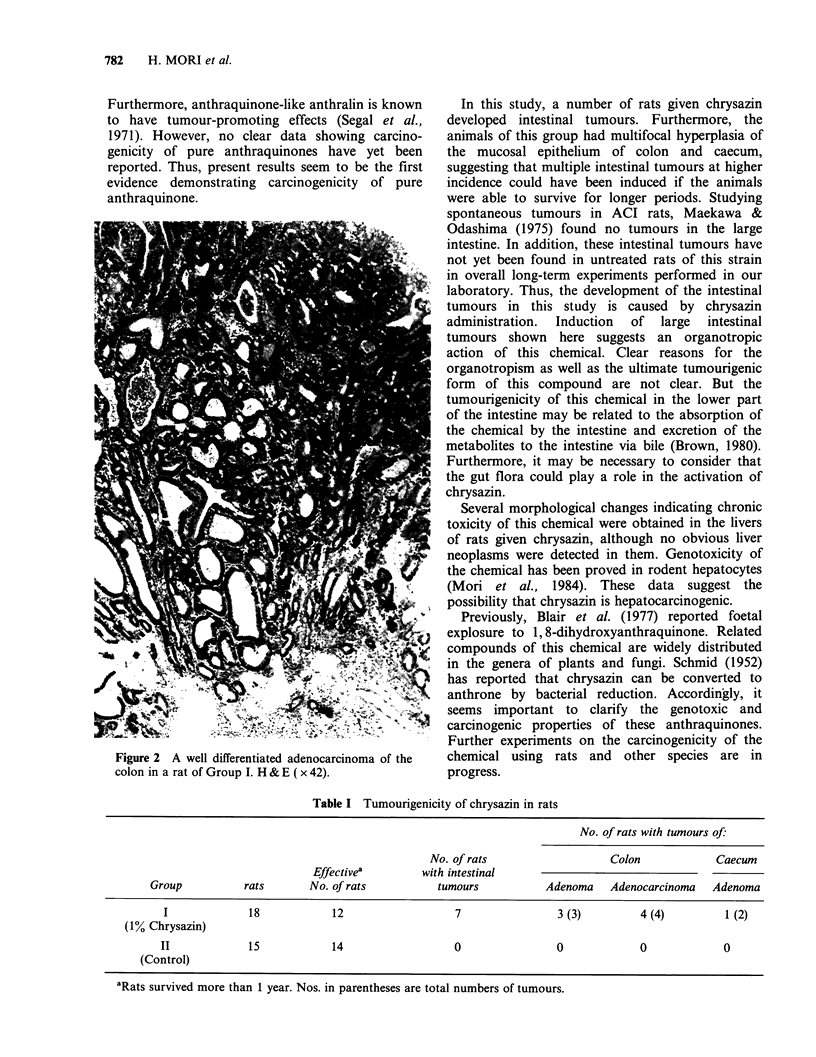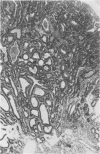Full text
PDF


Images in this article
Selected References
These references are in PubMed. This may not be the complete list of references from this article.
- Blair A. W., Burdon M., Powell J., Gerrard M., Smith R. Fetal exposure to 1:8 dihydroxyanthraquinone. Biol Neonate. 1977;31(5-6):289–293. doi: 10.1159/000240977. [DOI] [PubMed] [Google Scholar]
- Brown J. P. A review of the genetic effects of naturally occurring flavonoids, anthraquinones and related compounds. Mutat Res. 1980 May;75(3):243–277. doi: 10.1016/0165-1110(80)90029-9. [DOI] [PubMed] [Google Scholar]
- Brown J. P., Dietrich P. S. Mutagenicity of anthraquinone and benzanthrone derivatives in the Salmonella/microsome test: activation of anthraquinone glycosides by enzymic extracts of rat cecal bacteria. Mutat Res. 1979 Jan;66(1):9–24. doi: 10.1016/0165-1218(79)90003-x. [DOI] [PubMed] [Google Scholar]
- Griswold D. P., Jr, Casey A. E., Weisburger E. K., Weisburger J. H. The carcinogenicity of multiple intragastric doses of aromatic and heterocyclic nitro or amino derivatives in young female sprague-dawley rats. Cancer Res. 1968 May;28(5):924–933. [PubMed] [Google Scholar]
- Krishna Murthy A. S., Baker J. R., Smith E. R., Wade G. G. Development of hemangiosarcomas in B6C3F1 mice fed 2-methyl-1-nitroanthraquinone. Int J Cancer. 1977 Jan;19(1):117–121. doi: 10.1002/ijc.2910190116. [DOI] [PubMed] [Google Scholar]
- Maekawa A., Odashima S. Spontaneous tumors in ACI/N rats. J Natl Cancer Inst. 1975 Dec;55(6):1437–1445. doi: 10.1093/jnci/55.6.1437. [DOI] [PubMed] [Google Scholar]
- Mori H., Kawai K., Ohbayashi F., Kuniyasu T., Yamazaki M., Hamasaki T., Williams G. M. Genotoxicity of a variety of mycotoxins in the hepatocyte primary culture/DNA repair test using rat and mouse hepatocytes. Cancer Res. 1984 Jul;44(7):2918–2923. [PubMed] [Google Scholar]
- SCHMID W. Zur Wirkungsmechanismus diätetischer und medikamentöser Darmmittel. Arzneimittelforschung. 1952 Jan;2(1):6–20. [PubMed] [Google Scholar]
- Segal A., Katz C., Van Duuren B. L. Structure and tumor-promoting activity of anthralin (1,8-dihydroxy-9-anthrone) and related compounds. J Med Chem. 1971 Dec;14(12):1152–1154. doi: 10.1021/jm00294a002. [DOI] [PubMed] [Google Scholar]
- Tikkanen L., Matsushima T., Natori S. Mutagenicity of anthraquinones in the Salmonella preincubation test. Mutat Res. 1983 Mar;116(3-4):297–304. doi: 10.1016/0165-1218(83)90067-8. [DOI] [PubMed] [Google Scholar]
- Ueno Y., Sato N., Ito T., Ueno I., Enomoto M., Tsunoda H. Chronic toxicity and hepatocarcinogenicity of (+) rugulosin, an anthraquinoid mycotoxin from penicillium species: preliminary surveys in mice. J Toxicol Sci. 1980 Nov;5(4):295–302. doi: 10.2131/jts.5.295. [DOI] [PubMed] [Google Scholar]
- Uraguchi K., Saito M., Noguchi Y., Takahashi K., Enomoto M. Chronic toxicity and carcinogenicity in mice of the purified mycotoxins, luteoskyrin and cyclochlorotine. Food Cosmet Toxicol. 1972 Apr;10(2):193–207. doi: 10.1016/s0015-6264(72)80197-4. [DOI] [PubMed] [Google Scholar]



